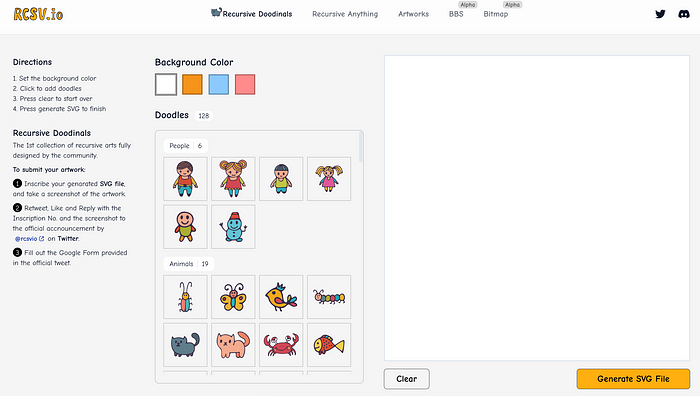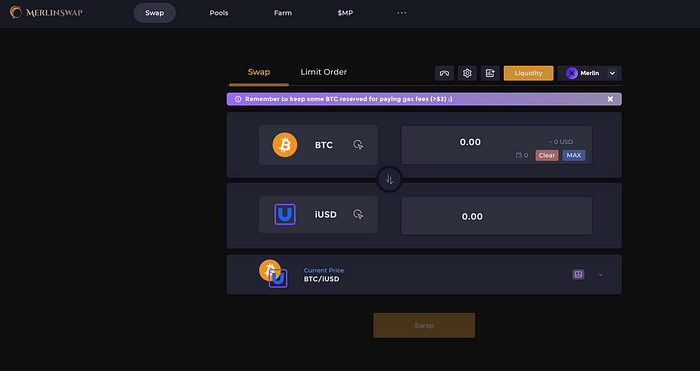The Rise and Fall of Merlin Chain: Past and Present
We all know that Bitcoin inscriptions began to flourish in May and June of last year, when the market was filled with discussions about BRC-20 and BTC NFTs. As the ecosystem continued to develop, a significant issue arose: when inscribing popular BTC NFTs or BRC-20 tokens, the on-chain transactions increased, leading to very high miner fees. Additionally, the 4MB limit per block hindered the emergence of high-definition NFTs. The market grew weary of the overwhelming pixel art NFTs, and subsequently, a new protocol emerged --- the BRC721 protocol, which aimed to introduce third-party storage to solve the problem of high-definition images. At that time, the protocol's development team was slow, and it could only be used with a new wallet that no one had heard of, while the website and image loading speeds were excessively long.
On June 12, Raph, the new maintainer of Ordinals, merged the "Recursive Inscription #2167" proposed by Ordinals creator Casey into the Ordinals code on GitHub. Subsequently, Leonidas, co-founder of ord.io, introduced the relevant content of recursive inscriptions in his tweet. The cost for NFT creators to inscribe 10,000 JPEG files for a single collection was quite expensive. By utilizing the recursive inscription protocol, some features could be inscribed collectively, and the variables of the features could be requested through code, allowing the overall image to be presented programmatically. This significantly reduced gas fees and enabled the inscription of high-definition images, rather than the ubiquitous pixel art NFTs. The code did not occupy more storage space, allowing inscriptions to break through the 4MB limit of Bitcoin blocks for display.
On June 17, @Rcsv_doodinals launched the http://RCSV.io website, where users could create compositions using SVG elements, generating new works through the technology of recursive inscriptions. At that time, everyone could engage in artistic creation on the platform, and the comment section was filled with various composite images. On July 15, the recursive forum Recursive BBS was launched, allowing text to be recorded on-chain. Subsequently, the new protocol BRC-420 was released, and the brand name was changed to Recursiverse, aiming to create a recursive universe.

On July 31, a product called Bitmap Explorer was released, which is a visual interface based on Bitmap, allowing users to engage in social activities, gaming, and more, representing the concept of a metaverse on Bitcoin. After that, discussions about inscriptions in the market began to dwindle, and people no longer paid much attention to projects in the Bitcoin ecosystem. In September, the project team launched the BRC-420 market and deployed the first asset named after the protocol, BRC-420, commonly referred to as the blue box. Subsequently, BRC-420 also received a recommendation from @L1Fxyz.
On November 15, 2023, the Bitmap token swap was announced, allowing each Bitmap to be exchanged for 1,000 $WMAP, which led to an increase in Bitmap prices; the market also began to see a revival of the BTC ecosystem, with the BRC-420 blue box rising to $1,000 in just a few days. During the second wave of inscriptions, the blue box surpassed $10,000 on December 18. On December 26, the brand was upgraded again to Bitmap Tech, and both Bitget and OKX wallets supported the integration of BRC-420. The founder believes that the new product model under the new narrative is very important, which can be seen in many products on BRC-420. Mineral combines DeFi and computing power, and some on-chain games of Bitmap are using the BRC-420 protocol to issue assets.
On January 19, 2024, the establishment of Bitcoin's Layer 2, Merlin Chain, was officially announced. According to founder Jeff, their Bitcoin team has always been working on things that have not appeared in other ecosystems, and any new ecosystem needs its own narrative. In the past few months, users have been constantly trying new things, making it difficult to find new assets and narratives, while liquidity and leverage have also been continuously weakening. Therefore, he wanted to create Layer 2 to accomplish things that cannot be achieved on Layer 1. Compared to other Layer 2 solutions, Merlin Chain focuses more on Bitcoin's native users and assets, aiming to serve Bitcoin assets such as ORDI, SATS, RATS, and so on. Unlike other Bitcoin Layer 2 solutions, it aims to let Bitcoin assets and communities use it first; at the same time, it has innovated technically, establishing its own cross-chain bridge and building ZK Rollup technology to further compress the size of ZK proofs, creating a DA Layer that inherits Bitcoin's security.
On January 26, 2024: the Merlin Chain testnet bridge was launched, and on January 27: izumi launched the Merlin Chain testnet swap @MerlinSwap. In February, it received investments from @ABCDELabs and @OKX_Ventures.

In February 2024, Merlin Chain launched a Launchpad on the Ally platform, releasing 1% of governance tokens $MERL (21 million); Merlin's Seal, by staking BTC/ETH/USDT/Ordinals/Atomicals and other assets, users can share 20% of the Merlin tokens, with a release ratio of 20% (420 million). In less than a month, the TVL quickly surpassed $3 billion, with partner projects including MPC wallet service provider Cobo, staking service provider Meson and Stakestone, Layer 2 ZKFair, and the well-established Bitcoin data service platform GeniiData, as well as the multi-chain DeFi data aggregation platform Defillama.

On February 21, the first fair launch inscription $VOYA was released, which could be received by staked users and early supporters, experiencing an astonishing increase in the following days. At the same time, the distribution of the Merlin Chain governance token $MERL began in March, where users could exchange $MERL tokens based on accumulated M points, with subsequent delays until the Bitcoin halving for distribution and asset unlocking. $MERL has already been listed on multiple exchanges, including OKX, Hashkey Global, Bybit, Bitget, and Gate, with a circulating supply of 245.7M MERL, accounting for 11.70% of the total circulating supply.

The project under its ecosystem, MerlinSwap, is a decentralized exchange aimed at supporting the Merlin Chain ecosystem. It uses discrete liquidity AMM. Discrete liquidity automated market makers (DL-AMM) allow liquidity providers to focus on specific price points and ranges with high trading volume, ensuring that users can achieve low slippage and more accurate prices when performing token swaps.

Another project, MerlinStarter, is the most important launch platform built on the Merlin Chain ecosystem, supporting all Bitcoin Layer 2 projects. MerlinStarter facilitates fair issuance on the Merlin Chain, with other features including bringing multi-chain tokens to the Merlin Chain while issuing Merlin Chain native tokens to other chains, supporting the issuance of BRC-20, BRC-420, ERC-20, and ERC-404 assets.

Recently, the unlocking time for staked assets has become longer, and the amount of Merlin tokens received has not been as high as expected. The prices of staked assets have also dropped significantly during this period. It is suggested that users consider staking assets they believe in for the long term, while avoiding long-term staking for short-term assets to protect their asset value. As for what the future holds and Merlin's plans, let's continue to pay attention.









